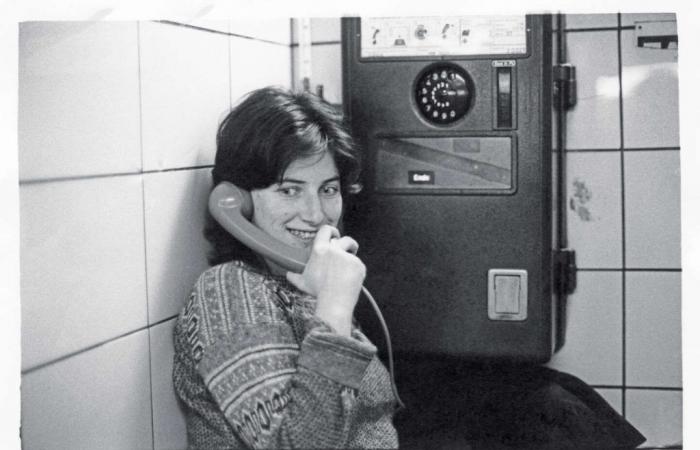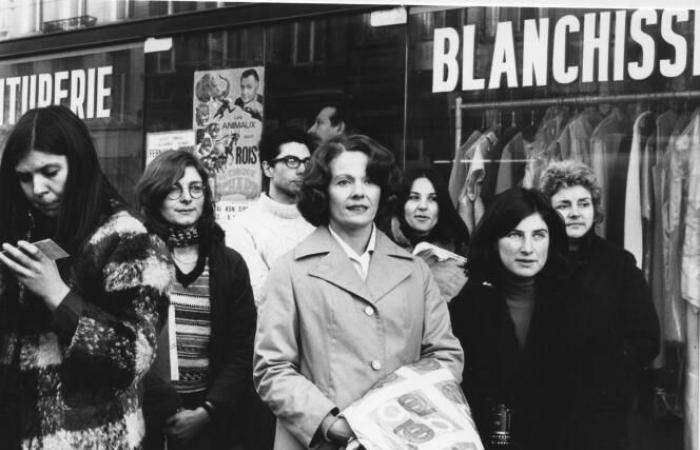Ten years. This is perhaps the time it takes for a work to come together as a whole, and to attract new perspectives. Thus, the return to theaters of Chantal Akerman’s work, almost a decade after her suicide in October 2015, constitutes a major event of the film-loving autumn. In April 2023, the release of Jeanne Dielman, 23, quai du Commerce, 1080 Brussels (1975) brought together twenty thousand spectators on two hundred screens.
The distributor Capricci drives the point home with, this time, a retrospective of sixteen feature films freshly restored by the Royal Cinematheque of Belgium. This salvo is divided into two stages: a first cycle (“1974-1993”) in theaters since September 25, the second (“1996-2015”) from October 23. To which is added an exhibition at the Jeu de Paume, in Paris (“Chantal Akerman. Traveling”, until January 19, 2025), focused on the plastic work of the filmmaker, through a tour of installations and archives . All topped off by a generous Blu-ray box set of forty-six films, expected in mid-October.
Read the story (2024) | Article reserved for our subscribers The second life of the film “Jeanne Dielman”, Chantal Akerman’s masterpiece
Add to your selections
This en bloc return invites, once past the monument Jeanne Dielmanto explore the vast detours of the work that lies behind it, often perceived along its lines of rupture (fictions, documentaries, TV films, self-portraits), but whose obsessive coherence we better understand today. Born in 1950 in the suburbs of Brussels, Chantal Akerman went behind the camera very early, and at the age of 18 shot her first short film, the explosive Skip my town (1968). At its beginnings, it absorbed some of the most radical aesthetic adventures of the time: firstly that of European modernity, of which it took the bandwagon under the impetus of Pierrot the Fool (1965), by Jean-Luc Godard; then that of the American avant-garde (Michael Snow, Jonas Mekas, Andy Warhol), which she immersed herself in during a stay in New York in the early 1970s.
Also read (2021): Article reserved for our subscribers Chantal Akerman, the energy of despair
Add to your selections
His cinema will maintain this double requirement of form, without renouncing to reach out to the public, through the means of comedy (A couch in New York1996 ; Tomorrow we move2004), you musical (Golden Eighties1986) or romance (La Captive2000, after Proust; La Folie Almayer2011, after Conrad).
Opposing horizons
The beauty of Akerman’s cinema is to create a tension between two opposing horizons: on one side the bedroom, where we withdraw, on the other the world, or the temptation of the distance. The whole challenge is to find passageways from one to the other, or to establish short circuits. In I, you, he, she (1974), the director portrays herself as an indolent recluse in her apartment, a small world that she reconfigures at will by moving the furniture. And then the young girl finally comes out, gets into a truck at random, walks a long way with the driver (Niels Arestrup), and then all the otherness of the world enters her field of vision. In News From Home (1977), Akerman collects views of New York in a non-legendary light (anonymous streets, characterless neighborhoods), while, in voice-over, letters signed by his mother are read. The indifferent city, broken down into lines and surfaces, is perceived through the filter of this epistolary filiation.
You have 54.78% of this article left to read. The rest is reserved for subscribers.







